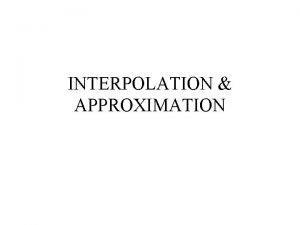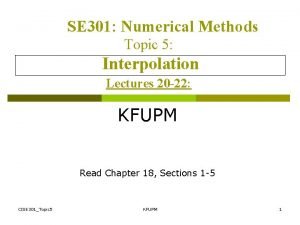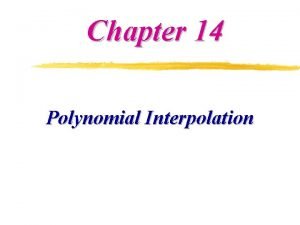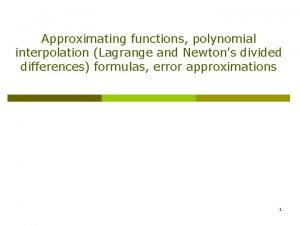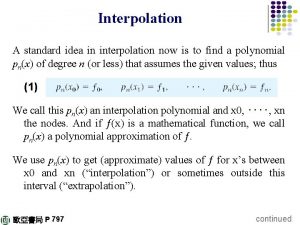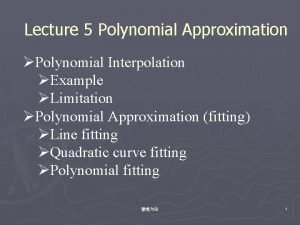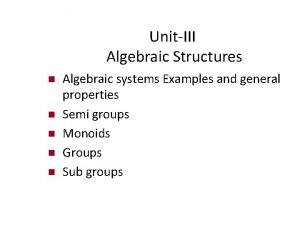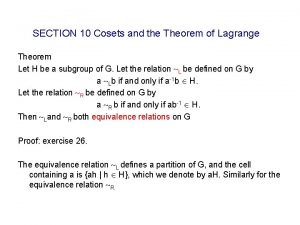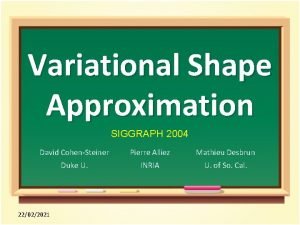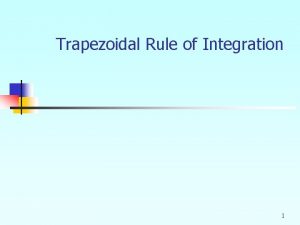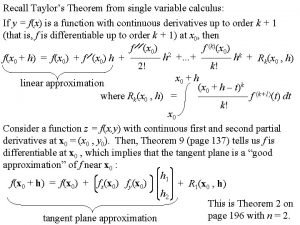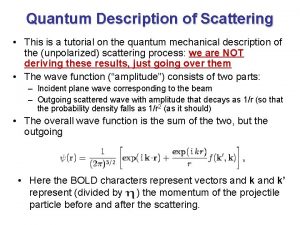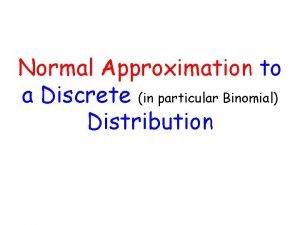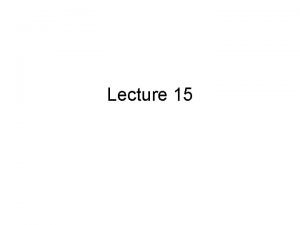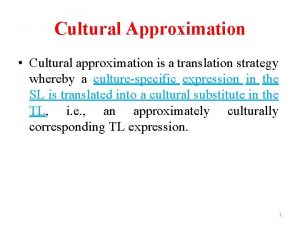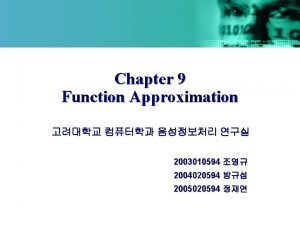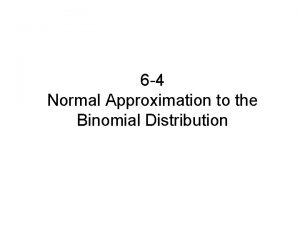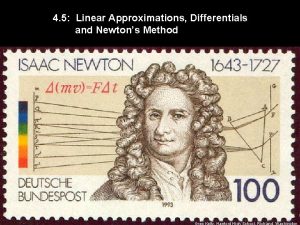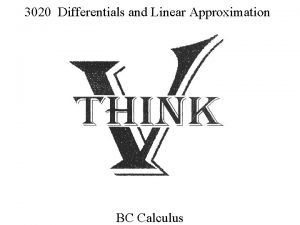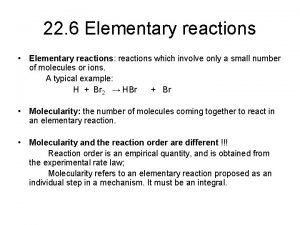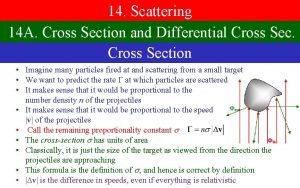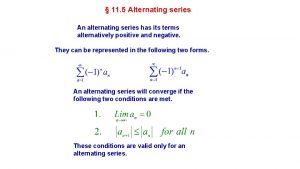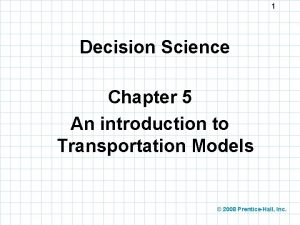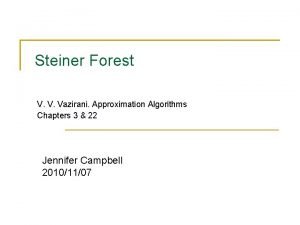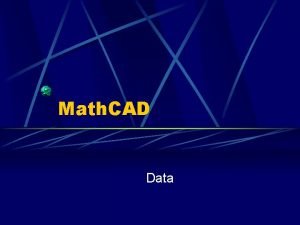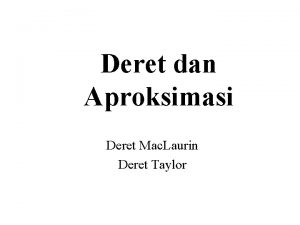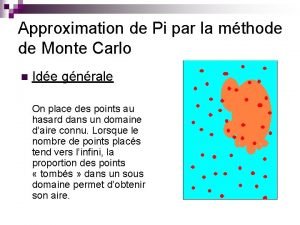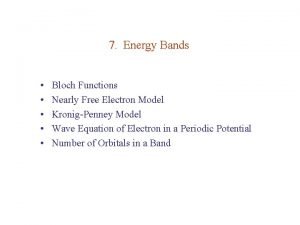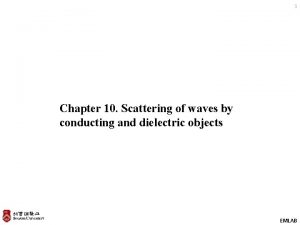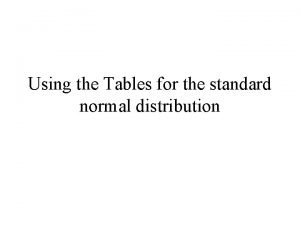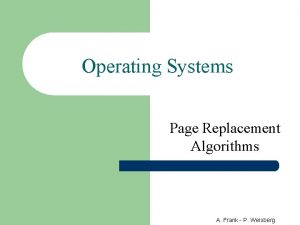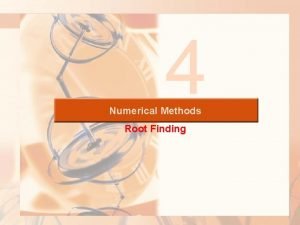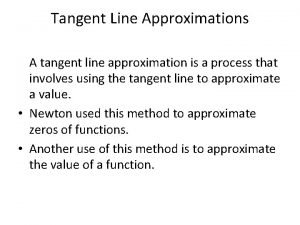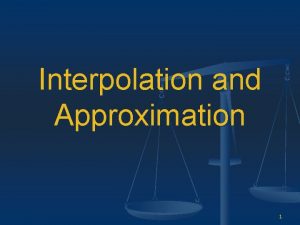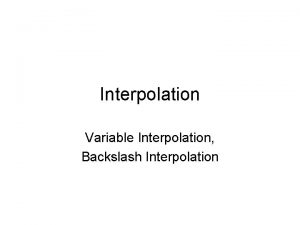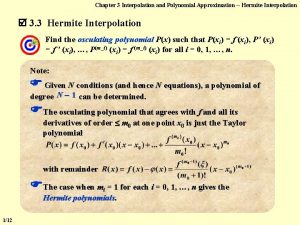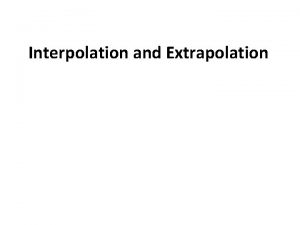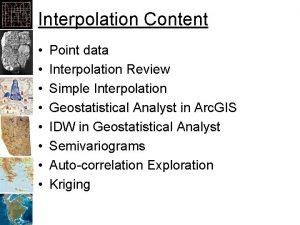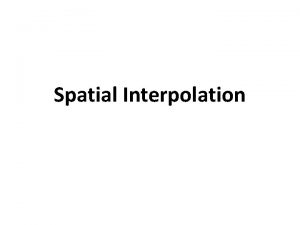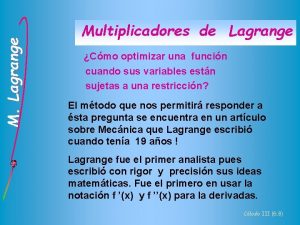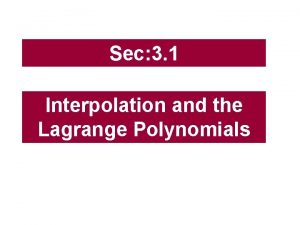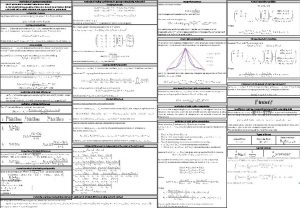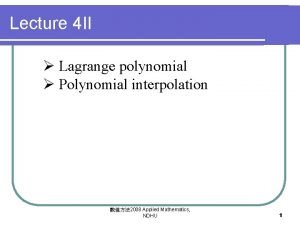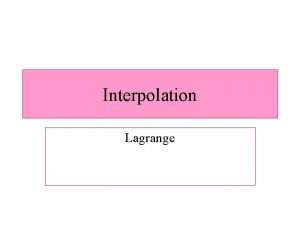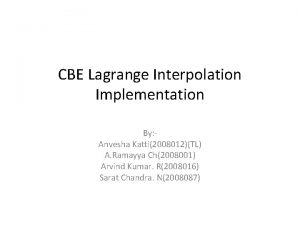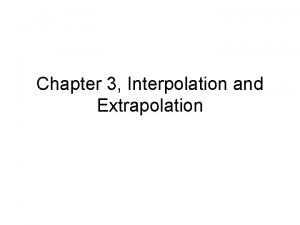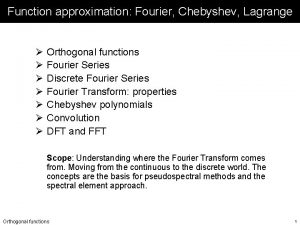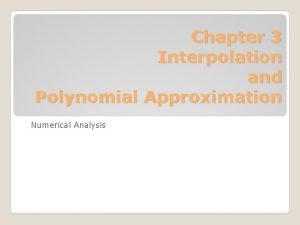Chapter 4 Interpolation and Approximation 4 1 Lagrange

















































- Slides: 49

Chapter 4 Interpolation and Approximation

4. 1 Lagrange Interpolation n The basic interpolation problem can be posed in one of two ways:




Example 4. 1 e-1/2


Discussion n The construction presented in this section is called Lagrange interpolation. How good is interpolation at approximating a function? (Sections 4. 3, 4. 11) Consider another example: n If we use a fourth-degree interpolating polynomial to approximate this function, the results are as shown in Figure 4. 3 (a).

Error for n=8

Discussion n n There are circumstances in which polynomial interpolation as approximation will work very well, and other circumstances in which it will not. The Lagrange form of the interpolating polynomial is not well suited for actual computations, and there is an alternative construction that is far superior to it.

4. 2 Newton Interpolation and Divided Differences n The disadvantage of the Lagrange form n n If we decide to add a point to the set of nodes, we have to completely recompute all of the functions. Here we introduce an alternative form of the polynomial: the Newton form. n It can allow us to easily write in terms of


=0

Example 4. 2

Discussion n n The coefficients are called divided differences. We can use divided-difference table to find them.

Example 4. 3


Example 4. 3 (Con. )

Table 4. 5

4. 3 Interpolation Error

Norms n The infinity norm of pointwise norm: n The 2 -norm:

The interpolation error of linear interpolation


Example 4. 5

Example 4. 5 (Con. )

4. 4 Application: Muller’s Method and Inverse Quadratic Interpolation n We can use the idea of interpolation to develop more sophisticated root-finding methods. For example: Muller’s Method Given three points we find the quadratic polynomial such that 0, 1, 2; and then define as the root of that is closest to.



compare

An Alternative to Muller’s Method n Inverse quadratic interpolation:



Discussion n n One great utility of Muller’s method is that it is able to find complex roots of real-valued functions, because of the square root in the computation. Inverse quadratic interpolation is used as part of Brent. Dekker root-finding algorithm, which is a commonly implemented automatic root-finding program.

4. 5 Application: More Approximations to the Derivative depends on x

4. 5 Application: More Approximations to the Derivative n The interpolating polynomial in Lagrange form is n The error is given as in (4. 20), thus n We get

We can use above equations to get:

4. 6 Hermite Interpolation n Hermite interpolation problem: n Can we do this? Yes.


Divided-Difference Table

An example

error

Hermite Interpolation Error Theorem

4. 7 Piecewise Polynomial Interpolation n n If we keep the order of the polynomial fixed and use different polynomials over different intervals, with the length of the intervals getting smaller and smaller, then interpolation can be a very accurate and powerful approximation tool. For example:




Example 4. 6


 Interpolation vs approximation
Interpolation vs approximation Lagrange's interpolation formula
Lagrange's interpolation formula Quadratic interpolation method
Quadratic interpolation method Lagrange interpolation formula
Lagrange interpolation formula Secret sharing lagrange interpolation
Secret sharing lagrange interpolation Quadratic interpolation formula
Quadratic interpolation formula Spline interpolation vs polynomial interpolation
Spline interpolation vs polynomial interpolation Lagrange, euler, and kovalevskaya tops
Lagrange, euler, and kovalevskaya tops Lagrange theorem
Lagrange theorem State lagrange's theorem
State lagrange's theorem Variational shape approximation
Variational shape approximation Trapezoidal sum
Trapezoidal sum Trapezoidal rule integration formula
Trapezoidal rule integration formula Taylor theorem
Taylor theorem Potentuial
Potentuial First born approximation
First born approximation Divms uiowa
Divms uiowa Geoid shape
Geoid shape What is steady state kinetics
What is steady state kinetics Euler's method formula
Euler's method formula Electrons in periodic lattices
Electrons in periodic lattices Cultural approximation
Cultural approximation Continuous least squares approximation
Continuous least squares approximation First approximation of diode
First approximation of diode Stepping stone method
Stepping stone method Normal approximation
Normal approximation Linear approximation
Linear approximation Linear approximation
Linear approximation Pre equilibrium approximation
Pre equilibrium approximation First born approximation
First born approximation Alternating series error approximation
Alternating series error approximation Vogel's approximation method
Vogel's approximation method Vazirani approximation algorithms
Vazirani approximation algorithms Genfit mathcad
Genfit mathcad What is covalent catalysis
What is covalent catalysis Blt method will convert analog filter to dt filter that has
Blt method will convert analog filter to dt filter that has Aproksimasi deret taylor
Aproksimasi deret taylor What does approximation mean
What does approximation mean Approximation de pi
Approximation de pi Approximation scheme
Approximation scheme Nearly free electron model
Nearly free electron model Born approximation
Born approximation Normal approximation table
Normal approximation table Lru approximation page replacement algorithm
Lru approximation page replacement algorithm Orbital approximation helium
Orbital approximation helium Lippmann schwinger equation born approximation
Lippmann schwinger equation born approximation Gradual channel approximation
Gradual channel approximation Fixed iteration method
Fixed iteration method What is virtual number of teeth
What is virtual number of teeth Tangent line approximation
Tangent line approximation
